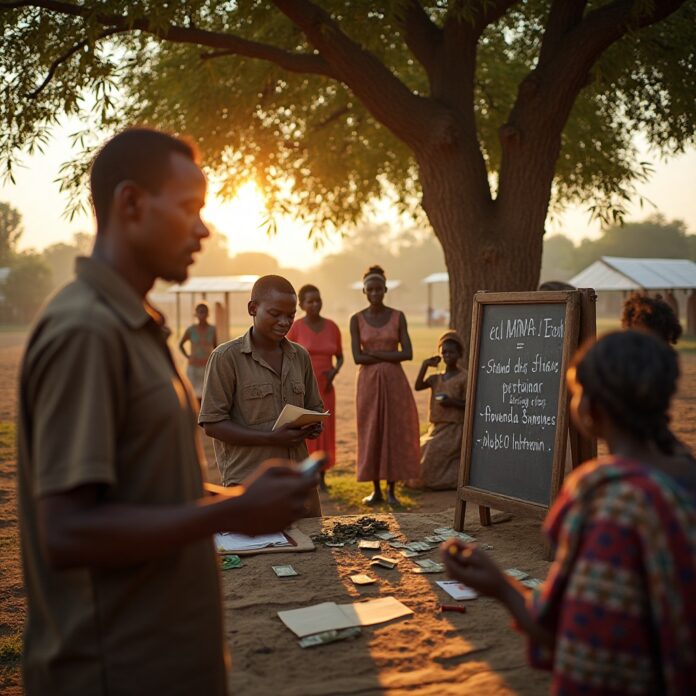Imagine standing in a remote village where families dream of sending their children to school or starting a small business but lack access to even the most basic financial tools. This is where microfinance steps in—not just as a service, but as a lifeline. If you’re an aspiring entrepreneur looking to launch a microfinance bank, you’re not just building a business; you’re bridging gaps in dignity and opportunity. But let’s be honest: the road ahead is thorny. Regulatory labyrinths, the delicate dance of loan recovery, and earning trust in tight-knit rural communities are hurdles that demand both heart and strategy. Let’s unpack these challenges together, one step at a time.
Navigating Regulatory Hurdles
Regulations might sound dry, but they’re the guardrails that keep your mission ethical and sustainable. Here’s how to navigate them without losing momentum:
- Licensing and Compliance
Start by understanding your country’s rules inside out. In India, for example, the Reserve Bank eased risk-weight requirements for micro-loans in 2025, freeing up capital for startups. Meanwhile, global standards like ISO 20022 are reshaping payment systems, demanding transparency in every transaction. Don’t forget data reporting: in the U.S., the CFPB’s Section 1071 rule now requires lenders to collect borrower demographics, ensuring fair access. - Interest Rate Caps
These can make or break your model. Vietnam caps rates at 30%, while global averages hover near 40%. Lower caps protect borrowers but squeeze profitability. The fix? Innovate. Offer non-financial services (like training) to offset costs, or partner with governments for subsidies. - ESG and Sustainability Mandates
Investors today want green impact. In Ghana, MFIs fund solar panels for farmers—aligning with climate goals while boosting repayment rates. Start measuring carbon footprints and social outcomes early; it’ll future-proof your operations. - Cybersecurity and Data Privacy
A data breach can shatter trust overnight. Adopt frameworks like GDPR or ISO 27001. Train staff to spot phishing attacks, and encrypt every transaction. In rural areas, biometric authentication (think fingerprint scans) adds security without complexity.
Effective Loan Recovery Strategies
Recovering loans isn’t about pressure—it’s about partnership. Here’s how to balance empathy and efficiency:
- Proactive Techniques
In Peru, MFIs slashed defaults by 15% using “loss frame” messaging (“Without repayment, your loan access ends”) and involving guarantors. In Ghana, flexible repayments during lean harvest seasons kept farmers solvent. - Technology-Driven Solutions
AI tools like Creditchek predict default risks by analyzing mobile payment histories. Send automated SMS reminders two days before due dates—simple nudges that boost on-time payments by 20%. - Challenges
Economic shocks (like inflation) can derail even loyal borrowers. Build a crisis fund to reschedule loans during downturns. Advocate for shared credit databases—without them, assessing risk in rural areas is like flying blind.
Building Trust in Rural Communities
Trust isn’t given; it’s earned through consistency and cultural humility.
- Community Engagement
Partner with local NGOs or women’s cooperatives. In Kenya, MFIs train village elders as loan officers—they know who’s reliable better than any algorithm. - Localized Product Design
Tailor loans to farming cycles. A coffee grower needs cash before harvest, repayable post-sale. In Nigeria, Farm Infinity uses satellite data to assess crop health, adjusting loan terms dynamically. - Digital Literacy Programs
Teach clients to use mobile banking apps. In Bangladesh, agents visit villages with tablets, demonstrating transactions through role-play. - Impact Measurement
Share stories, not just stats. Track how loans transform lives—a child’s education, a woman’s first business. Investors like the IFC pour millions into MFIs that prove social ROI.
Funding and Partnerships
Money matters, but relationships matter more.
- Grants and Loans
The USDA offers microloan revolving funds ($50k–$500k) and technical assistance grants. Pitch impact investors with a hybrid model: 70% loans, 30% grants for community training. - Collaborations
Fintechs are your allies. Partner with firms offering blockchain for transparent loan tracking or crypto wallets for the unbanked. In Indonesia, apps like KreditKu reach 30% more borrowers through WhatsApp-based approvals.
Case Studies
- Peru’s PRISMA Model
By framing repayments as a loss rather than a gain, defaults dropped 15%. Adding guarantors—often family leaders—created peer accountability. - Ghana’s Ashanti Region
Flexible repayments and weekly check-ins cut non-performing loans by 20%. Farmers repaid faster when agents visited during harvests, accepting crops as partial payment. - Indonesia’s Fintech Boom
Digital lenders like Amartha use AI to score borrowers without credit histories. Result? A 40% increase in women-led microbusinesses.
Future Trends
- Digital Transformation
Chatbots in local dialects will handle 80% of customer queries by 2026. Blockchain will track loans from approval to repayment, slashing fraud. - ESG Integration
The EU Taxonomy will push MFIs to fund green projects—think clean cookstoves or drought-resistant seeds. - Regulatory Harmonization
Cross-border AML standards will let you serve migrant workers sending remittances home, a $800B market waiting to be tappe
Launching a microfinance bank is a marathon, not a sprint. Stay agile: pivot regulations into opportunities, tech into trust-builders, and rural challenges into human connections. Partner boldly—with farmers, fintechs, and even competitors. Remember, every loan you issue isn’t just money; it’s a vote of confidence in someone’s future. Ready to take the first step?
This is your blueprint. Now go build something that outlasts you.


